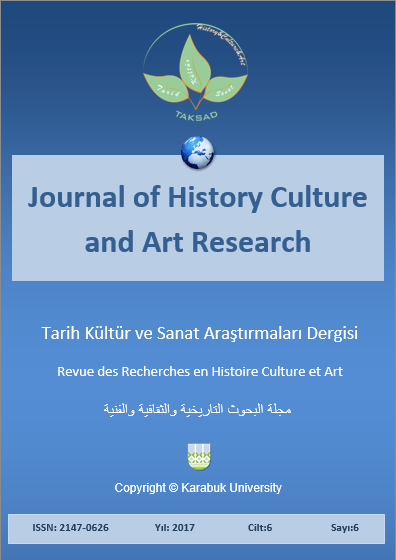The Effect of Environmental Graphics on the Attractiveness of Museums Interior Architecture
DOI:
https://doi.org/10.7596/taksad.v6i6.1203Keywords:
Museum, Interior Architecture, Environmental Graphics, Interior Design, Contemporary Art Museum.Abstract
This study investigates effects of environmental graphics on the museum's interior architecture. Organizing the interior of museums through the arrangement of elements in the space helps to attract more audiences as well as provides a cultural link. To reveal this connection, the study utilized a survey, which conducted by 256 visitors at the Museum of Contemporary Art in Tehran. The main issue of this study is: what is the first effect of environmental graphics on the museum's interior architecture? And what features of environmental graphics make museum interior architecture more attractive? The findings of the research were that the museum's interior architecture by interior environmental graphics make an integrating into the vertical movement of the visual elements with the horizontal arrangement of the visual elements in space, and the features of arranging the museum's interior architecture included an appropriate combination of contrasting spaces, harmonious relationships between space and light, and the artworks and dynamics of the horizontal arrangement of visual elements in space. Finally, it can be concluded that the museum's interior architecture creates a cultural connection and attraction by integrating the vertical movement of the visual elements with the horizontal arrangement of the visual elements in space.
References
Brooker, G. & Stone, S. (2009). Elements and objects. Worthing: AVA Publishing.
Cesar, T. & Lockwood, M. (2008). Social impacts of tourism: an Australian regional case study: International Journal of Tourism Research, 10(1), 365- 378.
Iloukhani, M. (2009). Environmental Graphic. Tehran: Fatemi Publisher.
KO, D. W. & Stewart, W. F. (2002). A Structural equation model of Residents, Attitudes for Tourism Development. Tourism Management, 23(1), 12-24.
Macleod, S. (2012). Museum Making: Narratives, Architectures, and Exhibitions. London: Routledge.
Mc Quail, D. (1997). Audience Analysis. Sage Publication.
Mc Quail, D. (2006). Audience Analysis. Translated by Liu, Yannan, Li, Ying & Yang, Zhenrong. Beijing: China Renmin University Press.
Nafisi, N. (2001). Museum maintenance. Tehran: Samt Publisher.
Ostovar, M. (2013). Environmental Graphic Art. Tehran: Raznameh Publisher.
Regidor, R. (2009). Impacts of music festivals on tourists’ destination image and local community Case Study. European Tourism Management, Bournemouth University.
Richards, G. (2007). Cultural Tourism: Global and Local Perspectives. New York: Haworth Press.
Richards, G. & Munster, W. (2010). Cultural Tourism Research Method. Wallingford: UK, Cab International.
Saremi, K. (1993). Iranian Museums. Tehran: Cultural Heritage Organization.
Downloads
Published
How to Cite
Issue
Section
License
All papers licensed under Creative Commons 4.0 CC-BY.- Share — copy and redistribute the material in any medium or format
- Adapt — remix, transform, and build upon the material for any purpose, even commercially.
Under the following terms:
Attribution — You must give appropriate credit, provide a link to the license, and indicate if changes were made. You may do so in any reasonable manner, but not in any way that suggests the licensor endorses you or your use.
- No additional restrictions — You may not apply legal terms or technological measures that legally restrict others from doing anything the license permits.







